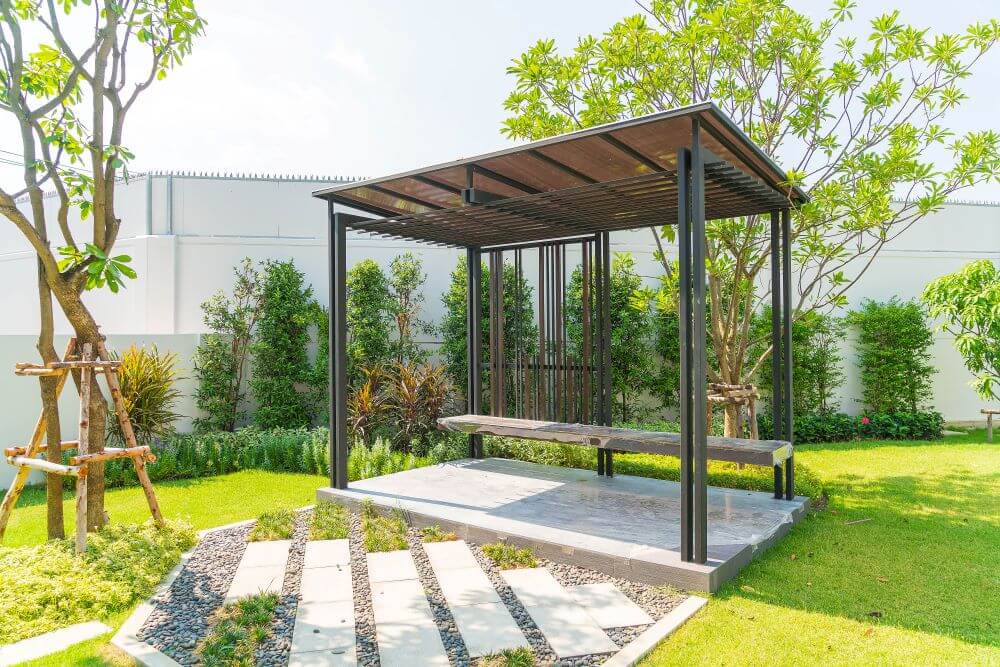Creating an outdoor space that feels inviting, functional, and beautiful doesn’t require constant upgrades or trendy gimmicks. Instead, the most impressive outdoor areas are thoughtfully designed with lasting impact in mind. Whether you’re working with a spacious backyard or a compact patio, timeless strategies can help you turn any outdoor area into a retreat you’ll enjoy year after year.
Here’s how to make your outdoor space shine — and stay that way.
1. Start with a Clear Purpose
Before you bring in plants, furniture, or lighting, define what you want from your outdoor space. Is it a quiet reading nook? A family dining area? A place to host guests?
Designing with purpose allows for better use of space and avoids clutter. When each element supports a goal — like comfort, convenience, or entertainment — your outdoor area naturally feels more cohesive and satisfying.
2. Invest in Durable, Timeless Materials
Skip the short-term fixes. Opt for materials that endure both weather and fashion trends. Stone, hardwood, stainless steel, and powder-coated metal all hold up well over time and don’t easily go out of style.
For furniture, look for pieces with clean lines and neutral tones. Cushions in fade-resistant fabrics like solution-dyed acrylic add both comfort and resilience.
3. Layer Lighting for Atmosphere and Function
Outdoor lighting should do more than illuminate—it should set a mood. Combine different types of lighting for the best effect: string lights for ambiance, spotlights to highlight landscaping, and solar path lights for safe walking at night.
When placed thoughtfully, lighting helps create depth and warmth. It’s one of the easiest ways to make your outdoor space usable and inviting even after the sun goes down.
4. Use Plants with Year-Round Appeal
Plants are essential, but not all provide lasting value. Aim for a mix of evergreens, perennials, and ornamental grasses. These offer structure, color, and texture across seasons, minimizing the need for frequent replacements.
Consider native plants too. They’re better suited to local climate conditions, require less water, and attract beneficial wildlife like pollinators.
The U.S. Forest Service provides a helpful guide on the benefits and selection of native plants by region.
5. Create Zones for Flexibility
One large patio area may seem practical, but breaking your space into smaller “zones” makes it feel more intimate and functional. For example, a firepit corner, a lounging area, and a dining section all serve different purposes without overlapping.
Use subtle dividers—like planters, pergolas, or outdoor rugs—to define each zone. This approach mimics the feel of indoor rooms and brings a sense of order outdoors.
6. Add a Focal Point
Just like in interior design, every outdoor space benefits from a visual focal point. This could be a water feature, a sculpture, a large tree, or even a striking piece of furniture.
Focal points anchor the eye and give the area a sense of intention. They also offer a starting place for your layout, helping the rest of the space fall naturally into place.
7. Upgrade Your Deck Thoughtfully
A deck is often the heart of an outdoor space. If yours is outdated or undersized, consider a remodel or expansion. But don’t just aim for what’s trending—build with intention, using quality materials and a layout that suits your lifestyle.
This is where working with a custom deck builder pays off. A skilled builder can tailor the design to your space and preferences, ensuring the structure not only looks good but lasts through all kinds of weather.
Deck enhancements such as built-in seating, hidden storage, or planter boxes can increase both beauty and utility without sacrificing simplicity.
8. Include Comfortable Seating
Uncomfortable chairs will keep your guests from staying long. Prioritize seating that invites lingering. Deep cushions, weather-resistant lounge chairs, and hammocks are all strong choices.
If space allows, vary the seating types. Mix a bench with individual chairs and a few floor cushions. This provides flexibility for different group sizes and makes the area more dynamic.
9. Incorporate Natural Elements
Water, wood, fire, and stone all bring a grounding, natural touch to outdoor spaces. A small water fountain adds soothing background sound. A fire pit provides warmth and a gathering point. Wood decking or stone paths reinforce an organic atmosphere.
Even subtle natural textures can transform a bland patio into a sanctuary. Think: pebble-filled planters, driftwood accents, or exposed wood beams under a pergola.
10. Make Maintenance Easy
The most stunning outdoor retreats don’t demand constant upkeep. Choose features that match your willingness (and ability) to maintain them. For instance, select low-maintenance composite decking instead of traditional wood if you want to avoid annual staining.
Use container gardens with drip irrigation, or opt for slow-growing shrubs instead of high-maintenance hedges. A space that’s easy to care for is one you’ll use more often—and with more joy.
Final Thoughts
A well-designed outdoor area doesn’t have to be flashy to stand out. By focusing on durability, intention, and balance, you can create a timeless retreat that’s enjoyable in any season and functional for years to come.
Whether you’re starting from scratch or updating an existing setup, these principles offer a solid foundation. Begin with small changes if needed—but always aim for lasting comfort and style.
Have a vision in mind? It may be time to consult a professional or revisit your layout. The best outdoor spaces don’t happen overnight. They evolve — just like the way we live in them.

















